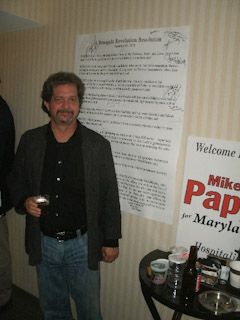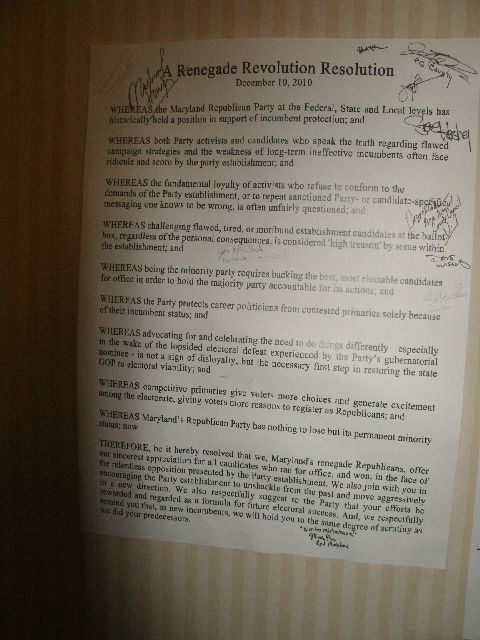If you’re not aware of this, the saga of appointing new legislative members in Carroll County came to an inglorious end when the state Court of Appeals ruled it was within the Carroll County Republican Central Committee’s right to send multiple names to Governor Hogan for the selection of a new member of the legislature. Personally I think it should remain as one name, but apparently Larry likes having choices.
But you may not be aware – in fact, I wasn’t either until it was alluded to at Monday night’s Central Committee meeting – that the next state party convention, to be held next month in Ocean City, will feature a push to have counties adopt a standardized policy on filling legislative vacancies.
Indeed, there is logic and sense behind this as a whole. However, if it’s up to each county to make this official I would recommend the Central Committee in Wicomico County adopt this with at least one change. In Section 13, where it reads:
The Chair shall submit one name, however, at the request of the Governor, may submit more than one name.
I would ask the sentence be amended thus:
The Chair shall submit one name.
Here’s the reasoning why we should stay with a one-name approach (and why the Court of Appeals got it wrong.)
It has long been the practice that Central Committees in each county submitted just one name – problems only tended to occur with multi-county districts where more than one name was sent because counties preferred different candidates. (Senate District 36 is a recent example.)
That District 36 situation illustrates the problem with a multiple-name approach. If my memory serves me correctly, two counties selected eventual winner (and then-Delegate) Steve Hershey while the two other ones tabbed former Delegate Michael Smigiel. The choice was eventually made by Martin O’Malley, a Democrat. (Note each of the four counties sent up one name.)
Someday there will be a Democratic governor again who will preside over the selection for filling a vacancy in a conservative Republican district. Based on the language in this prospective amendment, what is to stop this governor from informing the Central Committee that he or she wants ten names rather than just three? Or instead of making a formal selection, the governor simply requested the forwarding of the name of everyone who applied, regardless of merit?
There are not a lot of representative functions for which the local Central Committee is charged – mainly their job is to represent the county at the state conventions. But it does serve at times as the electorate in those situations where it’s not practical to have an election – in recent meetings, the committee I serve with has selected applicants for the Board of Elections and interviewed for vacancies in our Board of Education. In the recent past, our local Central Committees have worked to select members of the General Assembly who died in office – Republicans for Page Elmore in 2010 and Democrats for Bennett Bozman in 2006.
Because Maryland doesn’t have the provision for special elections, we have to take that task seriously as voters won’t be able to correct us for many months or even three-plus years. It’s interesting that Kathy Fuller, who was one of the plaintiffs in the Carroll County case (supporting the submission of just one name) has the idea of prohibiting the selection of a member of the General Assembly for an administration position. With one exception, that’s the root cause of all this commotion.
But I digress. While there are many times we would be satisfied with any of a number of candidates, there is generally one who stands above the others in our estimation; however, there’s no guarantee the Appointments Secretary will feel the same since it’s likely he or she won’t do an in-depth interview.
One name has worked well in the past, and it’s a shame Larry Hogan mucked up the system because he didn’t like the Central Committee’s original choice. That’s what it boils down to. A more stout Central Committee would have stuck with their first choice, so I think we need the rules that will stiffen their collective spines.



